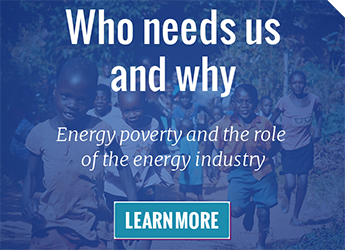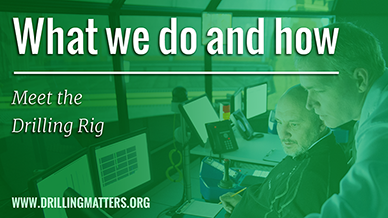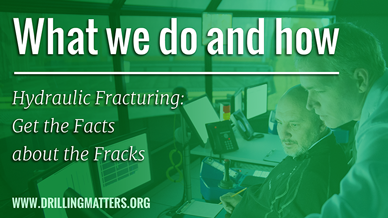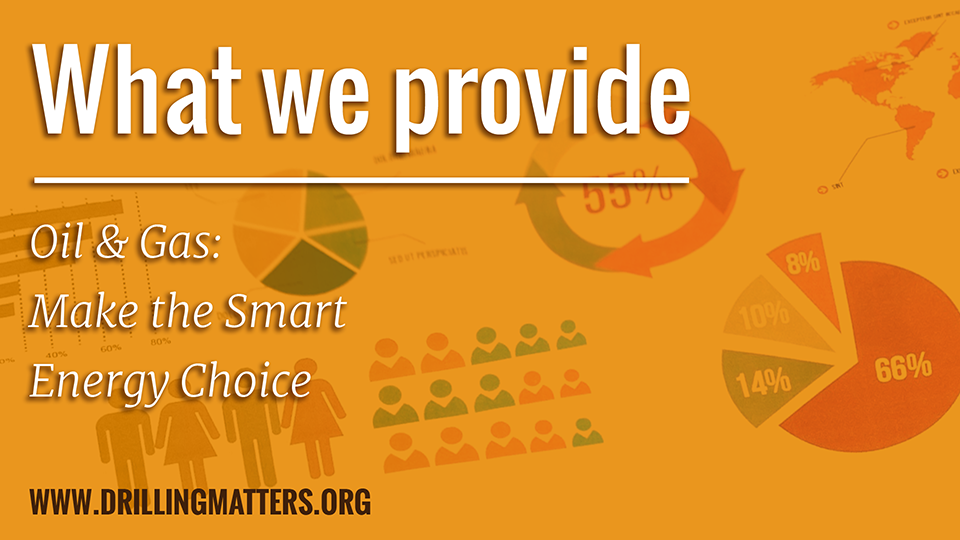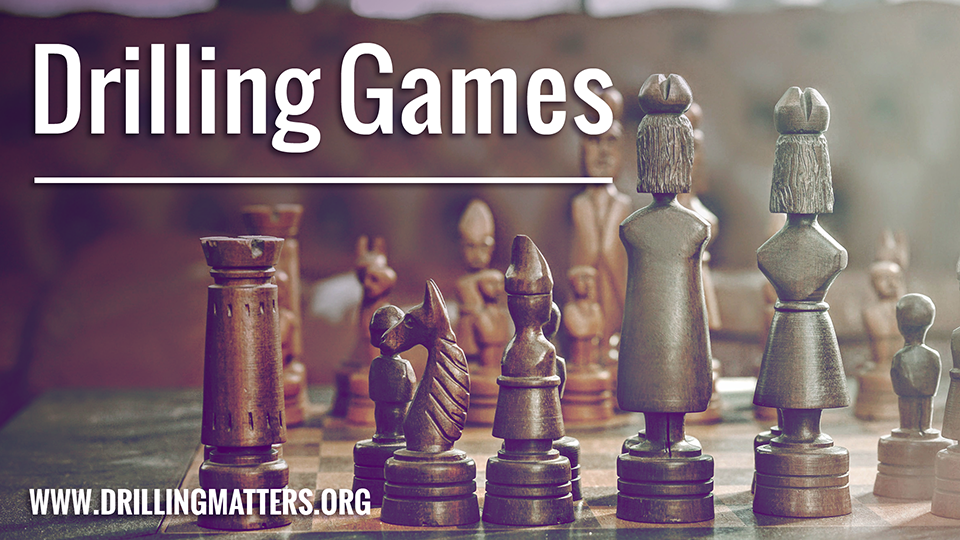
Who's Who in the Drilling Business
Drilling the wells that produce the world’s energy is a team effort. There are three main types of companies that collaborate in developing these energy sources -- E&P companies, drilling contractors, and oilfield services and manufacturing companies. E&P companies seek the subsurface hydrocarbon resources, and thus oversee the well drilling process. They also manage hydrocarbon transportation, gas processing and, often, petroleum refining. E&P companies employ drilling contractors, which provide drilling rigs and crews. E&P companies also contract oilfield service companies for additional equipment and materials at the wellsite. Finally equipment manufacturers develop the rigs and gear needed drill and complete wells.
Together, these companies comprise the upstream oil and gas segment. Learn about these different types of companies and what they do. Then, move on to other modules in the section.
A drilling rig is a complex piece of machinery designed for a single purpose — to drill oil, gas or geothermal wells.
Narration Transcript
The oil and gas industry helps satisfy the world’s energy needs through the extraction and refining of petroleum and natural gas. Drilling the wells that fuel our world is increasingly a high-tech pursuit requiring different skill sets and expertise.
There are three main types of companies that collaborate to extract crude petroleum and natural gas from below the Earth’s surface. These companies are the E&P companies, drilling contractors, technical service companies and OEMs.
Oil and gas companies, also called exploration and production, or E and P companies, seek the subsurface hydrocarbon resource. These companies range in size, from smaller independent operators targeting a specific land play, such as US shale, to publicly traded super-majors with operations worldwide, both onshore and offshore.
The role of E and P companies is to produce oil or gas for refining into fuels and other useful products or to power electrical plants.
Often, several E and P companies work as partners on a given well. Together, these firms determine where to drill a well, based on subsurface data acquired using seismic technology or through other names. One of these companies is given responsibility for day-to-day decision making during well drilling. This company is called the “operator.”
“First thing an operator has to do is get the rights to drill on a particular piece of land, so in the US, that would be to obtain a lease. Internationally, it is to arrange a contract with a government. Once we have the right to drill, then we select exactly where we want to drill the wells and when. The next step is to design the well – the engineering and mechanical design of exactly where the different strings of pipe will be underground – how the well will be drilled,” said John Willis, Chief – Drilling, Occidental Oil & Gas Corp.
After the formation has been selected, the operator designs an exploratory well to target the potential resources and determines which companies are best equipped to drill it.
“The next step is to select contractors that will do the work for us. We do not actually drill the wells ourselves. We hire drilling contractors and service companies to do that work for us. But we will manage the work during the drilling process and supervise it,” Mr Willis said.
If petroleum is found from the exploratory well in commercial quantities, the operator will plan additional wells, called development wells, to produce recoverable resources from the formation.
“Once we get through with the drilling process, then we complete the well and that means to create holes in the pipe or some sort of opening to get the oil and gas out of the underground formation and into the wellbore, and the wellbore itself is carefully sealed with heavy pipe to keep all of the oil and gas well contained and control all the pressures,” Mr Willis said.
However, before an operator can drill a well, it must first select a drilling rig. Drilling rigs are owned and operated by drilling contractors, also known as drillers. Their rig employees are called rig crews.
“Drilling contractors provide the capital equipment – the rigs, the personnel required to drill the wells. Our customers – the E&P Companies, the operators – they provide the capital to invest in the wells. They also provide the engineering and the oversight of the drilling of the wells,” said Mike Garvin, Senior Vice President, Operations Support, Patterson-UTI Drilling.
Drilling contractors are paid by the operator. Payment terms are usually a flat daily rate. Less common are so-called “footage” rates, where the drilling contractor is paid a fixed amount per foot of well drilled. Finally – and rarely – drilling contractors are paid to deliver the entire well for a large, flat fee. This is called “turnkey.”
“As drilling contractors, we construct the wells that oil and gas companies will ultimately use to produce oil and gas. We don’t produce oil ourselves and we don’t use our own equipment to produce the oil. We put a well in place and set up all the equipment in place so that an oil company can come in, put its own production platform and rig in place that will be used through the life of the field. Ultimately, that oil and gas is owned and produced by the oil companies and we get paid on a dayrate basis for our services when we’re present,” Pacifc Drilling CEO Chris Beckett said.
There are both onshore and offshore drilling contractor companies that range in size and focus. Onshore and offshore drilling contractors both exist to drill wells. However, there are important operational and technical differences differentiating land and offshore drilling operations.
“The well construction cycle time on land tends to be much shorter. Because of that, the rigs tend to be a bit smaller. Entrepreneurial spirit is still well alive in North America. One of the technologies that has really brought on the growth in oil production in North America has been this non-conventional shale play and pad drilling in particular. Where it used to take us three or four days to move the rig, we are now able to walk a rig from wellhead to wellhead within a matter of hours, rather than days,” Mr Garvin said.
Offshore drilling contractors can also specialize in operations targeting specific water depths. Generally, this includes shallow water, which is less than 1,000 ft, midwater, which ranges from 1,000 ft to 4,000 ft and deepwater, which is greater than 4,000 ft. Operations that take place in water depths greater than 7,500 ft are often considered ultra-deepwater.
“There is a lot more complexity to drilling offshore. The rig is the same and the well construction technique is largely the same but really the main difference is some of the technology that has to be used as you go deeper in the water. A shallow water rig is typically a rig very much like a land rig mounted on a solid platform that can be jacked up from the seabed to create a stable platform from which to drill,” Mr Beckett said.
A jackup is but one type of offshore drilling rig. Semisubmersibles and drillships float, unlike the bottom supported jackup. Hence, they can drill in much deeper water
“Typically we’ll use a semisubmersible or maybe a small drillship in a midwater environment and obviously that rig can move slightly. The deeper you go, the bigger that the vessels that we’ll use and in deepwater typically we’ll use a drillship. Drillships are much like the size of a second world war aircraft carrier. They are very big vessels,” Mr Beckett said.
To learn more about the various types of drilling rigs, view the “Meet The Rig” Module. Besides the drilling rig, operators must contract out numerous other services to successfully drill a well. Operators hire oilfield service companies to accomplish these jobs.
“Oilfield service companies provide a large range of services and applications, from drilling and formation evaluation, well construction, completion and stimulation and artificial lift or production at the end of the well program. When you look at the planning stages of an operator’s well and they are going through technology selections – planning the well – they will often come to us to evaluate the types of technologies that we have and see how we apply that. Often we’ve got to put specialized equipment and integrate that into the rigs, so we’ll generally sit down with the drilling contractor, we’ll look at ways we can make these things integrated – it talks to their control systems and importantly the safety management systems. We’ll figure those things out and then come back to the operator, demonstrating that we’ve been able to collaborate pretty well together and deliver the solution,” said Aaron Sinnott, Global Vice President Well Integrity – Tubular Running Services / Secure Drilling Services, Weatherford.
“The two main things where the service companies play a role, is first of all, in terms of providing people and technology, and the second one is the investment that they make in technology as well. From technologies to try to find where the resources are downhole, all the way to drilling the wells, providing drillbits, rotary steerable equipment, wireline technology, to sort of understand where the formation, where the reservoir is as well. The service companies actually start long before a well is drilled and they also stay involved throughout the lifecycle of the well. That could last for decades,” said Justus Kay, Vice President – Marketing & Technology, Schlumberger Geoservices.
The size and scope of oilfield service companies also varies, from larger firms that may offer more than 30 different services, to smaller groups that specialize in a single service. These companies may perform work for an operator on a single well for many years. Another segment that is integral to the drilling industry is equipment manufacturing, which develops the equipment necessary to drill the well. This includes drill pipe and casing, drill bits, drilling fluids, and all other equipment, including the rig itself.
“In the drilling process, we provide all of the equipment and hardware and software to do drilling so we apply it across the industry. We’ll deliver all of the systems that will drill the wells, so from the structures, the machines, and then the software and the controls that run those machines,” said David Reid, Chief Marketing Officer, National Oilwell Varco.
Equipment manufacturers collaborate with operators, drilling contractors and oilfield service companies to develop new types of equipment that builds on existing designs to solve oilfield challenges and streamline the drilling process. These companies are responsible for designing virtually all drilling equipment.
“What’s interesting for us is we do make with all these people in different applications. So we make the same machines and they all use them. When it gets to conversations about how do we get better, or how do we reach somewhere that we couldn’t reach before, we have to talk to all of them because everyone is involved in the process – and so we’ll spend a lot of time with all of them working out what is the best way to get the cost out? What is the best way to actually do things that we couldn’t do before? So get into deeper water, when we went through how to break up the earth to produce more on land, we all did that together. So, they will say here’s the challenge, here’s the opportunity – can you make the machine, and then we’ll go away and make the machine so it is a very collaborative process,” Mr Reid said.
In summation, the operator selects the formation to be drilled and designs the wells targeting the desired resource. The operator then selects a suitable drilling rig and contracts the drilling contractor – or driller – to conduct drilling operations. Operators also contract with other oilfield service companies to perform necessary drilling services during the operation, and equipment manufacturers create the technology these companies will need to drill the wells.
When it comes to drilling for oil and natural gas, it takes a team.

